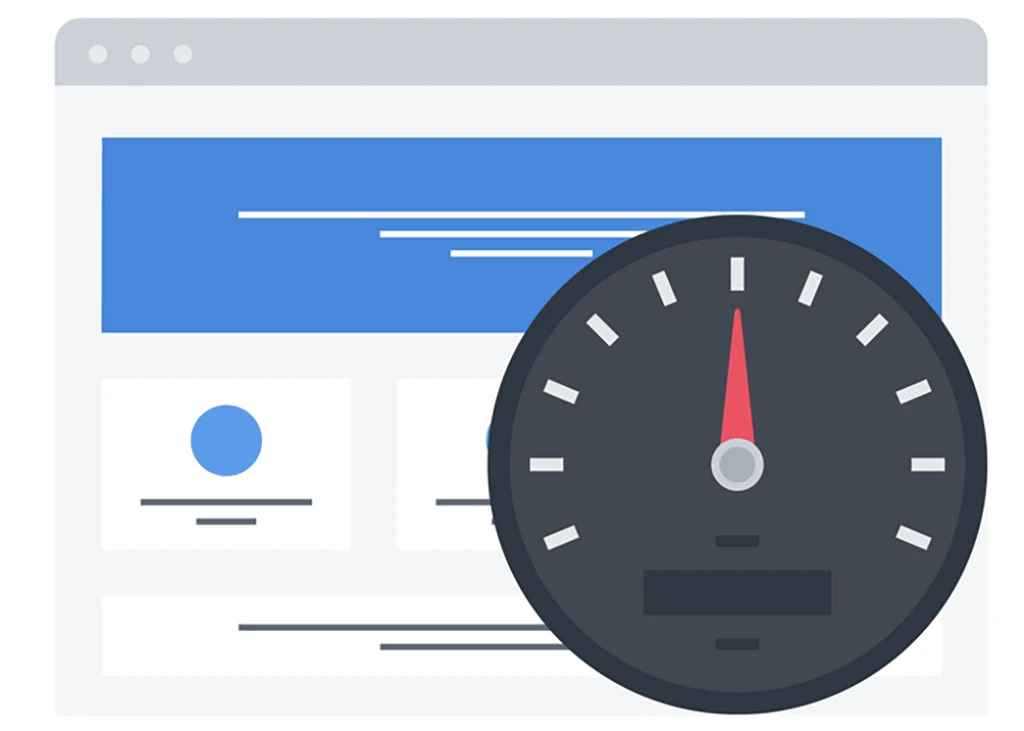If a website takes a long time to load, this can have adverse effects on the user experience, site traffic, and SEO. Websites that are optimized for performance have an advantage over slow websites.
What is site speed?
When a customer sits down to eat at a restaurant, slow service from the waiter often results in poor Yelp reviews and fewer future customers. Similarly, slow site speed can result in poor search engine rankings, lower overall site traffic, and negative user experiences.
Website speed, or performance, refers to how quickly a browser can load fully functional webpages from a given site. Poorly performing sites that render slowly in a browser can drive users away. Conversely, sites that load quickly will typically receive more traffic and have better conversion rates.
Why is site speed important?
Conversion rate:
Multiple studies have demonstrated that site speed affects conversion rate (or the rate at which users complete a desired action). Not only do more users stay on fast-loading sites, but they also convert at higher rates compared to slower sites. Several companies have found that a decrease in page load time of a few milliseconds increases conversions:
- Mobify found that decreasing their homepage’s load time by 100 milliseconds resulted in a 1.11% uptick in session-based conversion.
- Retailer AutoAnything experienced a 12-13% increase in sales after cutting page load time in half.
- Walmart discovered that improving page load time by one second increased conversions by 2%
Bounce rate:
The bounce rate is the percentage of users who leave a website after viewing only one page. Users will likely close the window or click away if a page does not load within a few seconds. BBC discovered that they lost 10% of their total users for every additional second it took for their pages to load.
SEO best practices:
Because Google tends to prioritize getting relevant information to users as quickly as possible, site performance is an important factor in Google search rankings. A site’s performance on mobile devices is especially important for SEO.
User experience:
Long page load times and poor response to user actions create a bad user experience. Waiting for content to load frustrates users and may provoke them to leave the site or application altogether.
What factors affect site speed?
Page weight:
The amount of resources a website needs to load greatly impacts site performance. Large JavaScript files, video content, heavy CSS files, and high-definition images all add significant ‘weight,’ or load time, to a webpage. To return to the restaurant example, a waiter delivering 10 dishes to a table instead of two or three will serve the table more slowly; likewise, a page that needs more resources to load will load more slowly.
Keeping websites light (meaning small file sizes and quick-loading pages) has grown more difficult as web technologies have increased capabilities and websites have become more complex. From single-page applications requiring multiple JavaScript functions to pages with third-party pop-up ads to homepages with moving backgrounds, developers can add more functionality than ever to webpages. As a result, the average total page weight is increasing.
Network conditions:
Even if a website is designed to be lightweight, it may not load quickly in browsers due to network slowness. The local networking equipment used and the quality of the ISP’s services impact network connectivity. Additionally, mobile devices using 3G or 4G instead of connecting to the Internet over WiFi will typically have slower network connections. Although this is largely out of developers’ hands, there are still techniques for delivering web resources quickly, even over slow connections. Techniques include minification, compression, and hosting content with a CDN.
Hosting location:
If content has to travel a long way to arrive where it is needed, this results in a high amount of network latency. For instance, if a website’s HTML and CSS files are hosted in a data center in Ohio and its images in a data center in Florida, a user on the West Coast will have to wait while all of these files travel thousands of miles to their device.
How can I measure my website’s speed?
Several organizations offer website speed tests. Many speed tests can identify individual webpage elements slowing the page down and provide performance metrics.
What website performance metrics are important?
- Load time is how long it takes for an entire webpage to appear in the browser, which means every HTTP request has to be fulfilled. Almost every page on the Internet will require multiple HTTP requests because multiple resources need to be loaded in addition to the basic HTML of the page.
- Page size is the total file size of all the resources that must be loaded for the page to function. Page size impacts how long it takes for a browser to load the page, and it can also have a big impact on mobile users, who may be paying for data as they load web pages.
- Time To First Byte (TTFB) measures the time between a browser’s request for a webpage and when the first byte of the response arrives. Load time is more important, but TTFB is still considered when assessing website performance and may impact SEO.
- The number of round trips measures how often a request/response needs to travel to an origin server and back. The more round trips a webpage requires, the greater the latency.
- Round Trip Time (RTT) is the time it takes for requests to make a round trip, meaning the request reaches the origin server, and the response travels back to the device that made the request.
